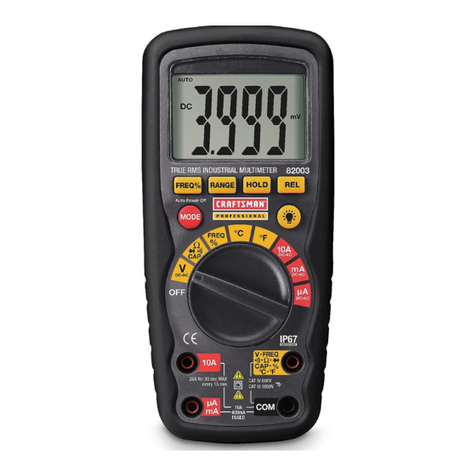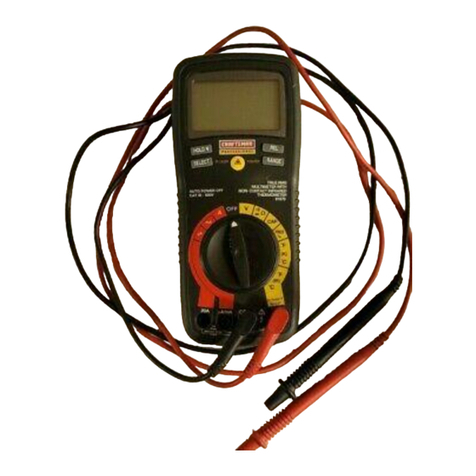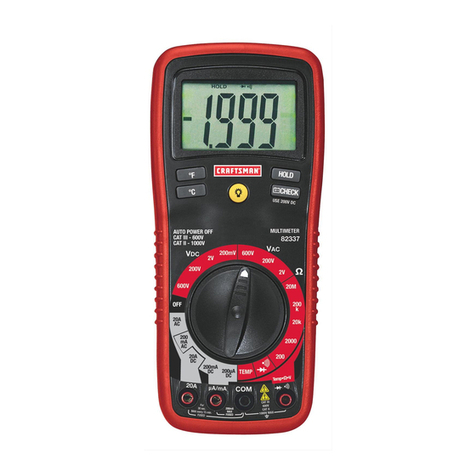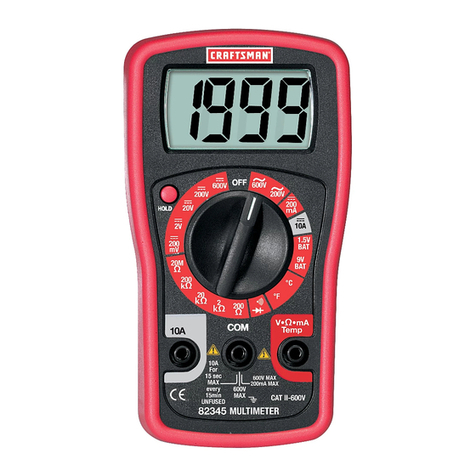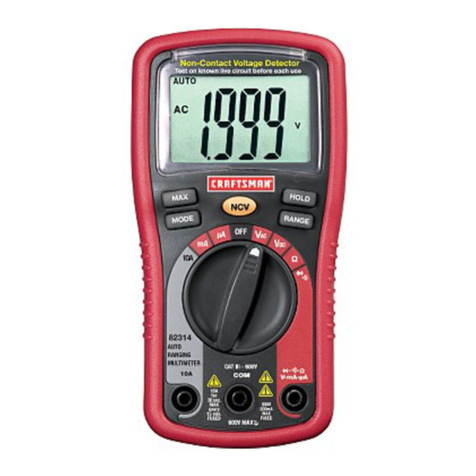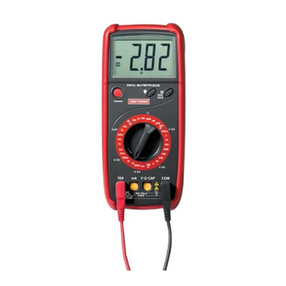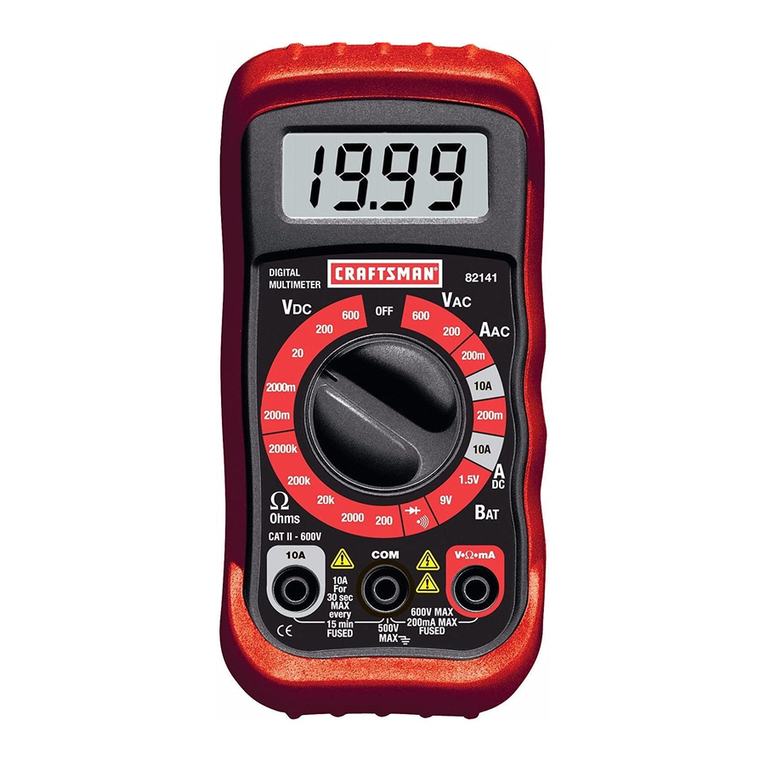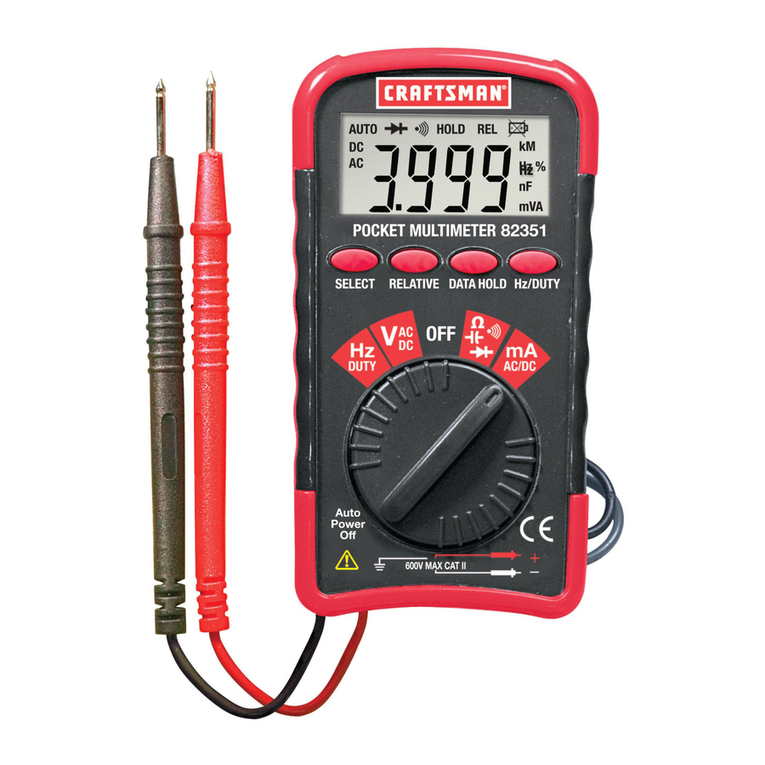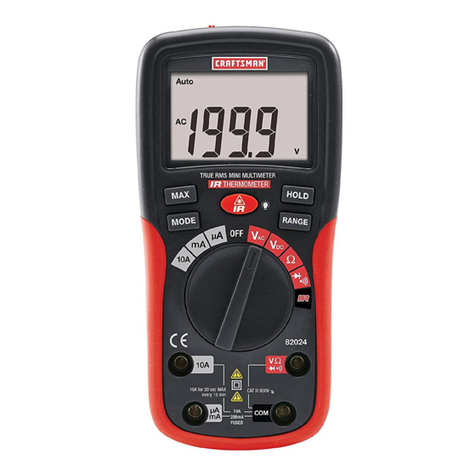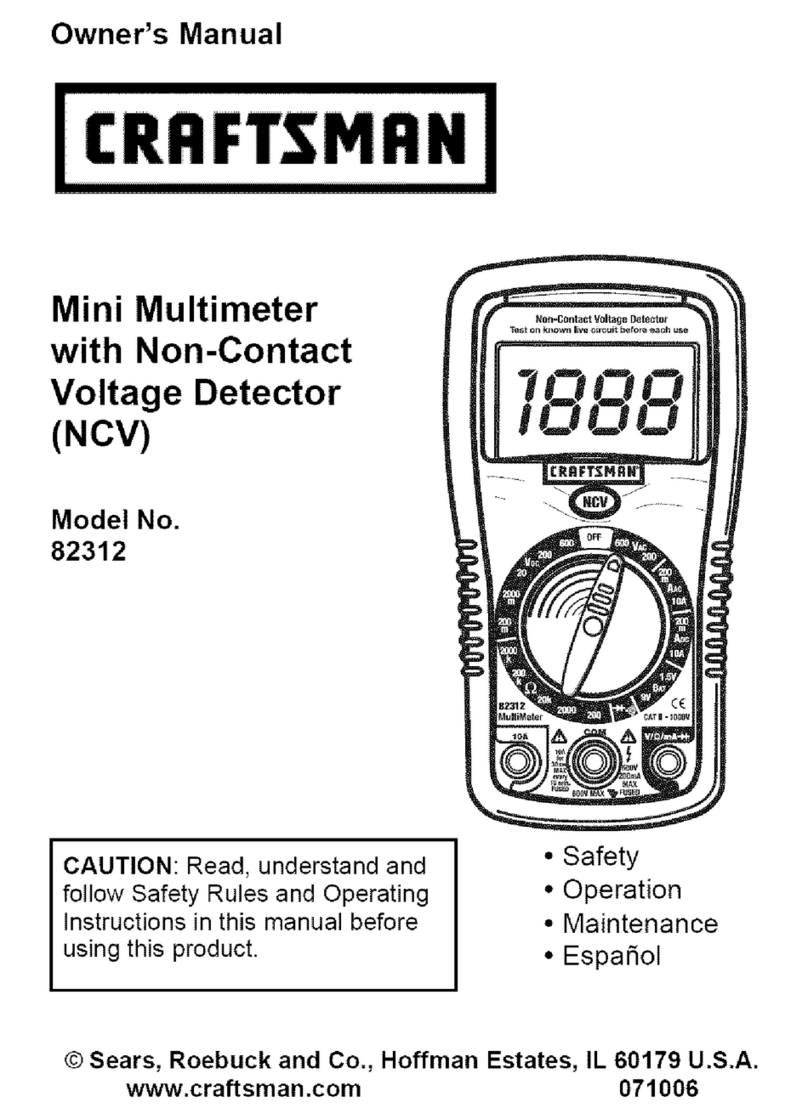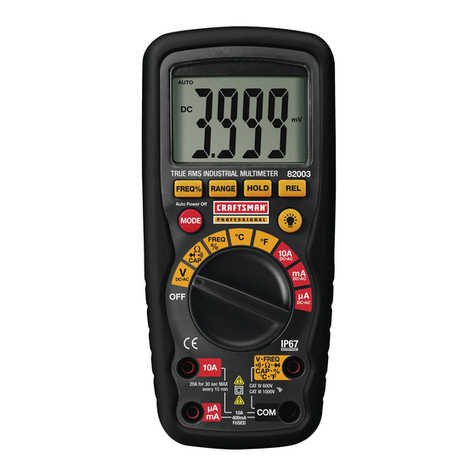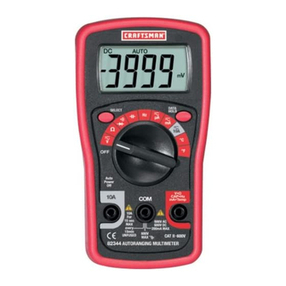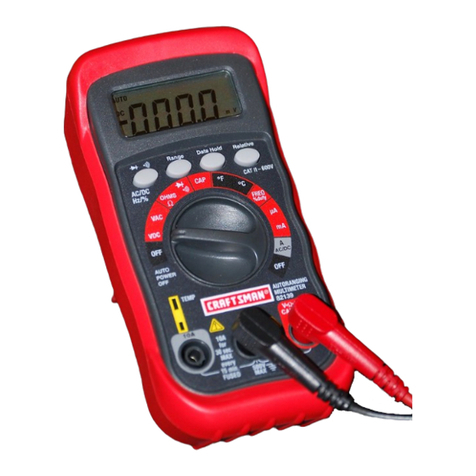1
2
3
4
5
6
7
Owner’s Manual
Analog Multimeter
Model: 82362
© Sears, Roebuck and Co., Hoffman Estates, IL 60179 U.S.A.
www.craftsman.com 080206
ONE YEAR FULL WARRANTY
ONE YEAR FULL WARRANTY ON CRAFTSMAN MULTIMETER
If this CRAFTSMAN Multimeter fails to give complete satisfaction within one
year from the date of purchase, RETURN IT TO THE NEAREST SEARS
STORE OR OTHER CRAFTSMAN OUTLET IN THE UNITED STATES, and
Sears will replace it, free of charge.
This warranty gives you specific legal rights, and you may also have other
rights which vary from state to state.
Sears, Roebuck and Co., Dept. 817WA, Hoffman Estates, IL 60179
For Customer Assistance Call 9am - 5pm (ET)
Monday through Friday 1-888-326-1006
WARNING: USE EXTREME CAUTION IN THE USE OF THIS DEVICE.
Improper use of this device can result in injury or death. Follow all safeguards
suggested in this manual in addition to the normal safety precautions used in
working with electrical circuits. DO NOT service this device if you are not
qualified to do so.
SAFETY INSTRUCTIONS
This meter has been designed for safe use, but must be operated with caution.
The rules listed below must be carefully followed for safe operation.
1. NEVER apply voltage or current to the meter that exceeds the specified
maximum:
Input Protection Limits
Function Maximum Input
V DC or V AC 500V AC and DC
mA DC 500mA DC
Resistance 50V DC/AC
2. USE EXTREME CAUTION when working with high voltages.
3. DO NOT measure voltage if the voltage on the "COM" input jack exceeds
600V above earth ground.
4. NEVER connect the meter leads across a voltage source while the
function switch is in the current or resistance mode. Doing so can
damage the meter.
5. ALWAYS discharge filter capacitors in power supplies and disconnect the
power when making resistance tests.
6. ALWAYS turn off power and disconnect test leads before opening the
covers to replace the fuse or battery.
7. NEVER operate the meter unless the back cover and the battery and fuse
covers are in place and fastened securely.
8. If the equipment is used in a manner not specified by the manufacturer,
the protection provided by the equipment may be impaired.
SAFETY SYMBOLS
This symbol adjacent to another symbol, terminal or operating
device indicates that the operator must refer to an explanation
in the Operating Instructions to avoid personal injury or damage
to the meter.
This WARNING symbol indicates a potentially hazardous
situation, which if not avoided, could result in death or serious
injury.
This CAUTION symbol indicates a potentially hazardous
situation, which if not avoided, may result damage to the
product.
This symbol advises the user that the terminal(s) so marked
must not be connected to a circuit point at which the voltage
with respect to earth ground exceeds 500V.
This symbol adjacent to one or more terminals identifies them
as being associated with ranges that may, in normal use, be
subjected to particularly hazardous voltages. For maximum
safety, the meter and its test leads should not be handled when
these terminals are energized.
This symbol indicates that a device is protected throughout by
double insulation or reinforced insulation.
CONTROLS AND JACKS
1. Scale
2. Pointer
3. Scale zero adjust
4. Ohms zero adjust
5. Rotary function switch
6. Positive V, mA and !input jack
7. COM input jack
SPECIFICATIONS
Function Range Accuracy
500V
250V
50V
DC Voltage
10V
± 4% of full scale
500V
250V
50V
AC Voltage
(50/60Hz)
10V
± 5% of full scale
250mA
50Ma
DC Current
0.5mA
± 4% of full scale
Rx10 (10,000!!Resistance
Rx1k (1,000,000!!± 5% of full scale
Decibels -10 to +56 dB (4 ranges) 0dB=1mW in 600!
Max input voltage 500V AC/DC
Input Sensitivity, 2k!"V
(Frequency Ranges) 50/60Hz
Battery 0ne (1) 1.5V AA battery (not provided)
Fuse 500mA/250 fast blow (5mmx20mm)
Operating Temperature 41oF to 104oF (5oC to 40oC)
Storage Temperature 14oF to 122oF (-10oC to 50oC)
Operating Humidity Max 80% up to 87ºF (31ºC) decreasing linearly to
50% at 104ºF (40ºC)
Storage Humidity <80%
Operating Altitude 7000ft. (2000meters) maximum.
Weight 3.88oz (110g)
Size 3.82x3.34x1.3” (97x65x33mm)
Safety For indoor use and in accordance with the
requirements for double insulation to IEC1010-1
(1995): EN61010-1 (1995) Overvoltage Category II
600V, Pollution Degree 2. UL, CE Approved
#Safety
#Operation
#Maintenance
#Español
CAUTION: Read, understand and
follow Safety Rules and Operating
Instructions in this manual before
using this product.
WARNING
CAUTION
MAX
500V
